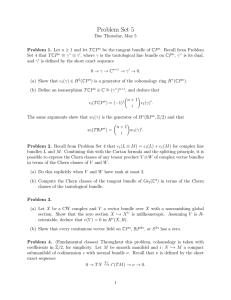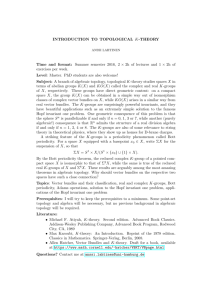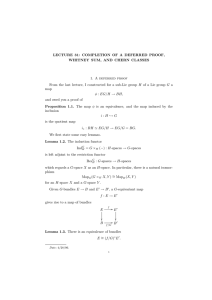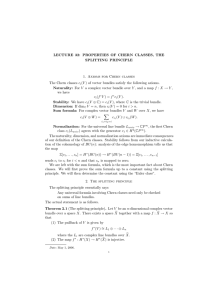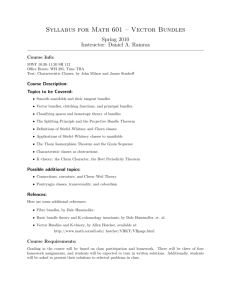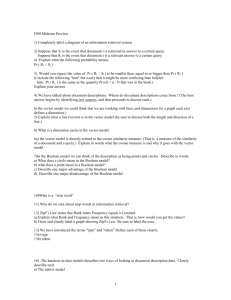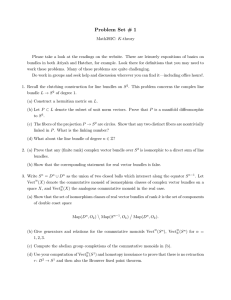Math 601 - Vector Bundles Homework III Please turn in solutions to
advertisement
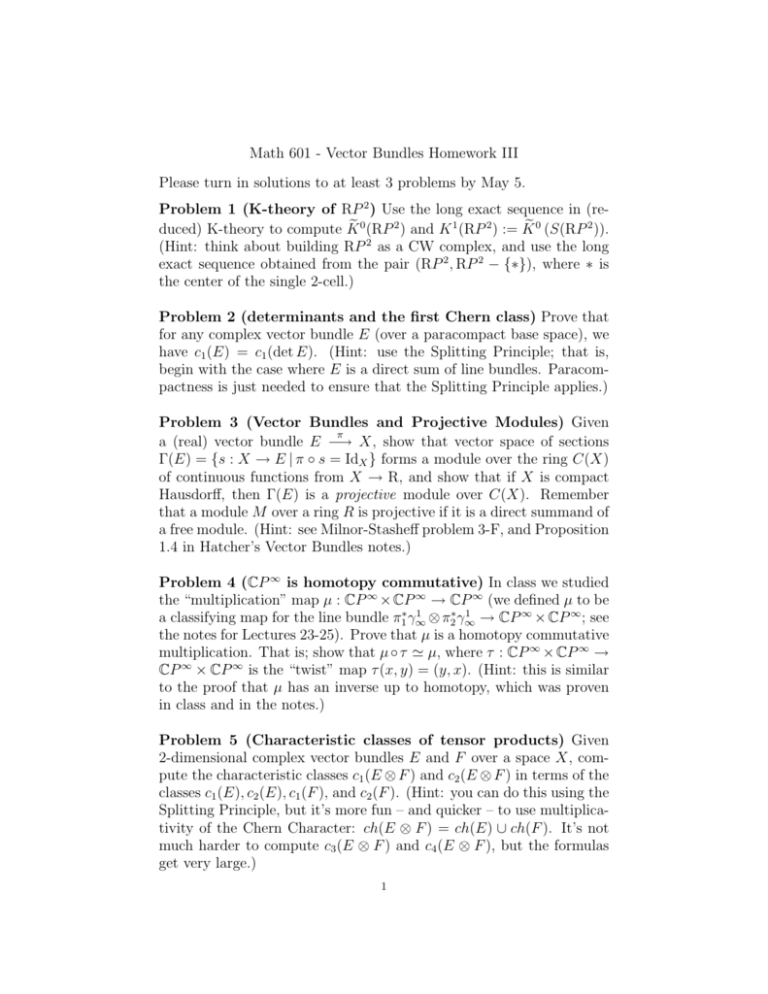
Math 601 - Vector Bundles Homework III
Please turn in solutions to at least 3 problems by May 5.
Problem 1 (K-theory of RP 2 ) Use the long exact sequence in (ree 0 (RP 2 ) and K 1 (RP 2 ) := K
e 0 (S(RP 2 )).
duced) K-theory to compute K
2
(Hint: think about building RP as a CW complex, and use the long
exact sequence obtained from the pair (RP 2 , RP 2 − {∗}), where ∗ is
the center of the single 2-cell.)
Problem 2 (determinants and the first Chern class) Prove that
for any complex vector bundle E (over a paracompact base space), we
have c1 (E) = c1 (det E). (Hint: use the Splitting Principle; that is,
begin with the case where E is a direct sum of line bundles. Paracompactness is just needed to ensure that the Splitting Principle applies.)
Problem 3 (Vector Bundles and Projective Modules) Given
π
a (real) vector bundle E −→ X, show that vector space of sections
Γ(E) = {s : X → E | π ◦ s = IdX } forms a module over the ring C(X)
of continuous functions from X → R, and show that if X is compact
Hausdorff, then Γ(E) is a projective module over C(X). Remember
that a module M over a ring R is projective if it is a direct summand of
a free module. (Hint: see Milnor-Stasheff problem 3-F, and Proposition
1.4 in Hatcher’s Vector Bundles notes.)
Problem 4 (CP ∞ is homotopy commutative) In class we studied
the “multiplication” map µ : CP ∞ × CP ∞ → CP ∞ (we defined µ to be
1
1
→ CP ∞ × CP ∞ ; see
⊗ π2∗ γ∞
a classifying map for the line bundle π1∗ γ∞
the notes for Lectures 23-25). Prove that µ is a homotopy commutative
multiplication. That is; show that µ ◦ τ ' µ, where τ : CP ∞ × CP ∞ →
CP ∞ × CP ∞ is the “twist” map τ (x, y) = (y, x). (Hint: this is similar
to the proof that µ has an inverse up to homotopy, which was proven
in class and in the notes.)
Problem 5 (Characteristic classes of tensor products) Given
2-dimensional complex vector bundles E and F over a space X, compute the characteristic classes c1 (E ⊗ F ) and c2 (E ⊗ F ) in terms of the
classes c1 (E), c2 (E), c1 (F ), and c2 (F ). (Hint: you can do this using the
Splitting Principle, but it’s more fun – and quicker – to use multiplicativity of the Chern Character: ch(E ⊗ F ) = ch(E) ∪ ch(F ). It’s not
much harder to compute c3 (E ⊗ F ) and c4 (E ⊗ F ), but the formulas
get very large.)
1
